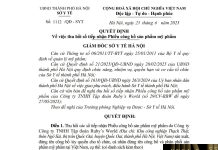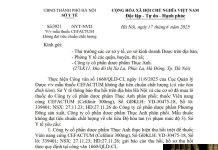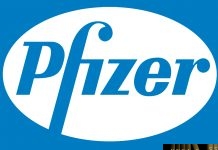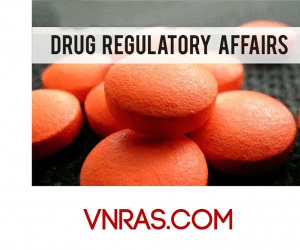European CE Marking Strategy for Medical Devices
ANSWERED ON THIS PAGE:
- What is the CE Mark and what does it mean?
- What is the CE Marking process for medical devices?
To sell medical devices in the European Union (EU), you must obtain or apply CE Marking for your product. CE Marking indicates a product’s compliance with the applicable EU regulations and enables the commercialization of your products in 32 European countries. As a legal medical device manufacturer, you are responsible for maintaining regulatory compliance and securing CE marking for your product, regardless of whether you outsource any or all components of your manufacturing operation.
How to obtain CE marking for your medical device
CE is not a quality mark, but compliance with EU Directives requires you to meet specific standards of performance, quality, safety, and efficacy for your product type. The basic process follows these steps:
- Determine which EU Directive applies to your device: Medical Devices Directive (93/42/EEC), In Vitro Diagnostic Devices Directive (98/79/EC) or Active Implantable Medical Devices Directive (90/385/EEC).
- Determine the classification of your device.
- Implement a Quality Management System, if applicable to your device. Most companies use ISO 13485 to meet the requirements.
- Prepare a CE Marking Technical File or a Design Dossier
- Select and appoint a European Authorized Representative to act on your behalf within the EU if you have no physical location in Europe.
- Have your QMS and Technical File/Design Dossier audited by a Notified Body, unless your device is Class I, is not sterile and has no measuring function.
- Obtain CE Marking and ISO 13485 certificates from your Notified Body.
- Prepare a Declaration of Conformity (DoC), which states that your device complies with the appropriate Directive.
NOTE: The CE Marking process will change as Europe’s new Medical Device Regulation (MDR) comes into force in May 2020.
Frequently Asked Questions
How long is a CE certificate valid?
Under the current system, CE certificates issued by Notified Bodies are generally valid for three years. The validity period may only be one year for some high risk devices. However, the status of your CE certification is dependent on maintaining your quality system certification.
Our device already has CE Marking. How will the MDR affect our status?
The MDR is expected to come into effect in May 2020. Certificates issued prior to final implementation of the MDR will have a maximum validity of five years. However, all CE Mark certifications issued before implementation of the new regulations will automatically expire four years after the new regulations come into force.
Who will issue my CE Marking certificate?
If your medical device is Class I (provided sterile or has a measuring function), Class IIa, IIb, or III, or if your IVD falls under Annex II, List A; Annex II, List B, or is self-testing, you will receive a CE certificate from a Notified Body. Class I non-sterile, non-measuring devices and general/other IVDs may be self-certified and do not require a CE certificate from a Notified Body.
Does the Notified Body name appear on my product labeling?
Their name will not appear but their four-digit NB number will appear under the CE Mark symbol on your labeling.
Will changing a contract manufacturer impact my CE certification?
Yes, because this is a change in critical suppliers. In this situation, Legal Manufacturers (i.e., “owners” of the CE marking) will select a new contract manufacturer based on criteria outlined in their quality system, which should describe how to qualify and continually assess their suppliers.
The Legal Manufacturer must notify their Notified Body of this change and request an updated CE certificate. The Notified Body may require an onsite audit of the new contract manufacturer to issue an updated CE Certificate.
According to EmergoGroup
European CE Marking Strategy for Medical Devices
European CE Marking Strategy for Medical Devices
- What is the CE Marking and what does it mean?
- What is the CE Marking process for medical devices?
To sell medical devices in the European Union (EU), you must obtain or apply CE Marking for your product. CE Marking indicates a product’s compliance with the applicable EU regulations and enables the commercialization of your products in 32 European countries. As a legal medical device manufacturer, you are responsible for maintaining regulatory compliance and securing CE marking for your product, regardless of whether you outsource any or all components of your manufacturing operation.
How to obtain CE marking for your medical device
CE is not a quality mark, but compliance with EU Directives that requires manufacturers to meet specific standards of performance, quality, safety, and efficacy for your product type.
The basic process follows these steps:
- Determine which EU Directive applies to your device: Medical Devices Directive (93/42/EEC), In Vitro Diagnostic Devices Directive (98/79/EC) or Active Implantable Medical Devices Directive (90/385/EEC).
- Determine the classification of your device.
- Implement a Quality Management System applicable to your device. Most companies use ISO 13485 to meet the requirements.
- Prepare a CE Marking Technical File or a Design Dossier
- Select and appoint a European Authorized Representative to act on your behalf within the EU if you have no physical location in Europe.
- Have your QMS and Technical File/Design Dossier audited by a Notified Body, unless your device is Class I, not sterile, and has no measuring function.
- Obtain CE Marking and ISO 13485 certificates from your Notified Body.
- Prepare a Declaration of Conformity (DoC), which states that your device complies with the appropriate Directive.
NOTE: The CE Marking process will change as Europe’s new Medical Device Regulation (MDR) comes into force in May 2020.
Frequently Asked Questions
How long is a CE certificate valid?
Under the current system, CE certificates issued by Notified Bodies are generally valid for three years. The validity period may only be one year for some high-risk devices. However, the status of your CE certification is dependent on maintaining your quality system certification.
Our device already has CE Marking. How will the MDR affect our status?
The MDR is expected to come into full effect in May 2020. Certificates issued prior to final implementation of the MDR will have a maximum validity of five years. However, all CE Mark certifications issued before implementation of the new regulations will automatically expire four years after the new regulations come into force.
Who will issue my CE Marking certificate?
If your medical device is Class I (sterile or has a measuring function), Class IIa, IIb, or III, or if your IVD falls under Annex II, List A or List B, or is self-testing, you will receive a CE certificate from a Notified Body. Class I non-sterile, non-measuring devices and general/other IVDs may be self-certified and do not require a CE certificate from a Notified Body.
Does the Notified Body name appear on my product labeling?
Their name will not appear but their four-digit NB number will appear under the CE Mark symbol on your labeling.
Will changing a contract manufacturer impact my CE certification?
Yes, because this is a change in critical suppliers. In this situation, Legal Manufacturers (i.e., “owners” of the CE marking) will select a new contract manufacturer based on the criteria outlined in their quality system, which should describe how to qualify and continually assess their suppliers.
The Legal Manufacturer must notify their Notified Body of this change and request an updated CE certificate. The Notified Body may require an onsite audit of the new contract manufacturer to issue an updated CE Certificate.
Source: EmergoGroup
Edited by: Jean Ngo

































